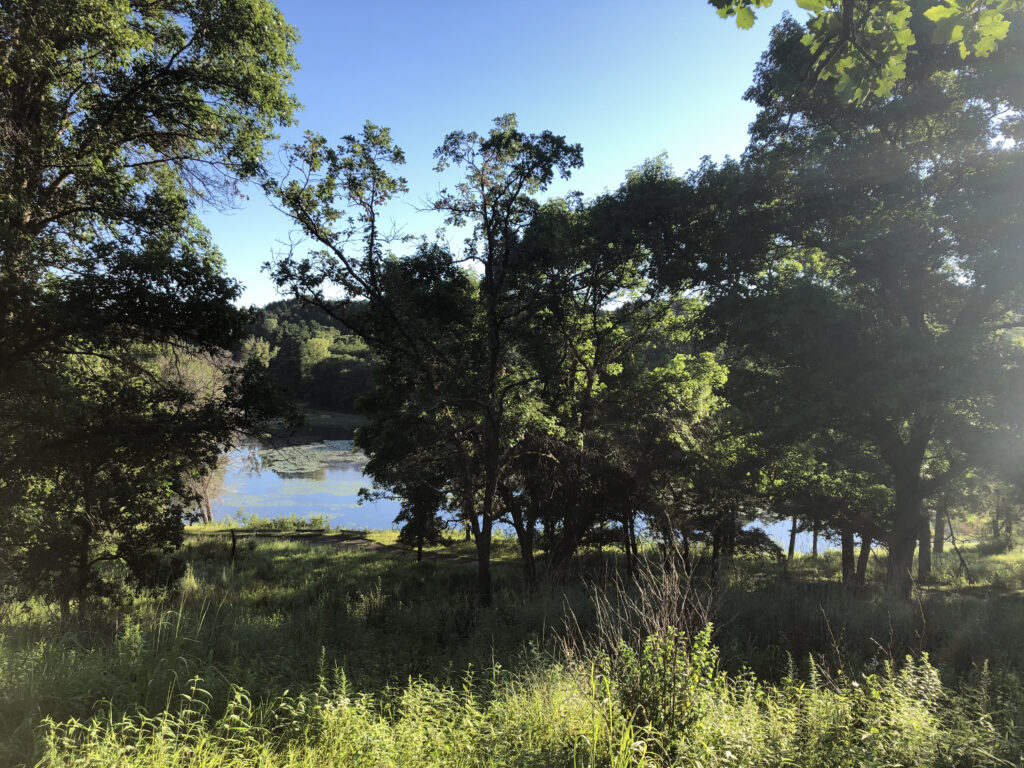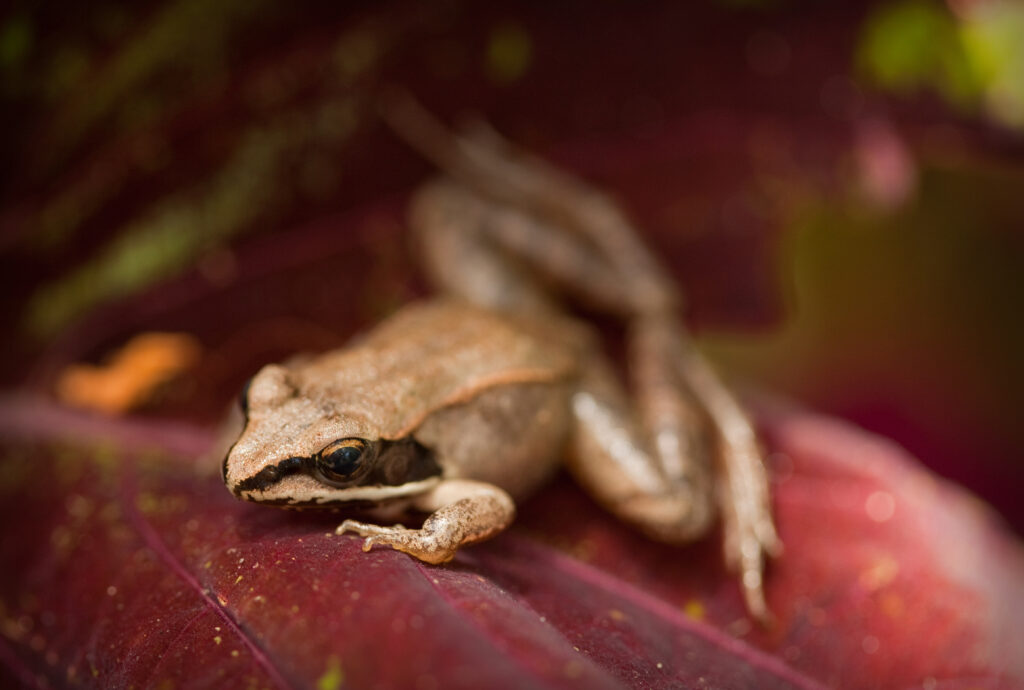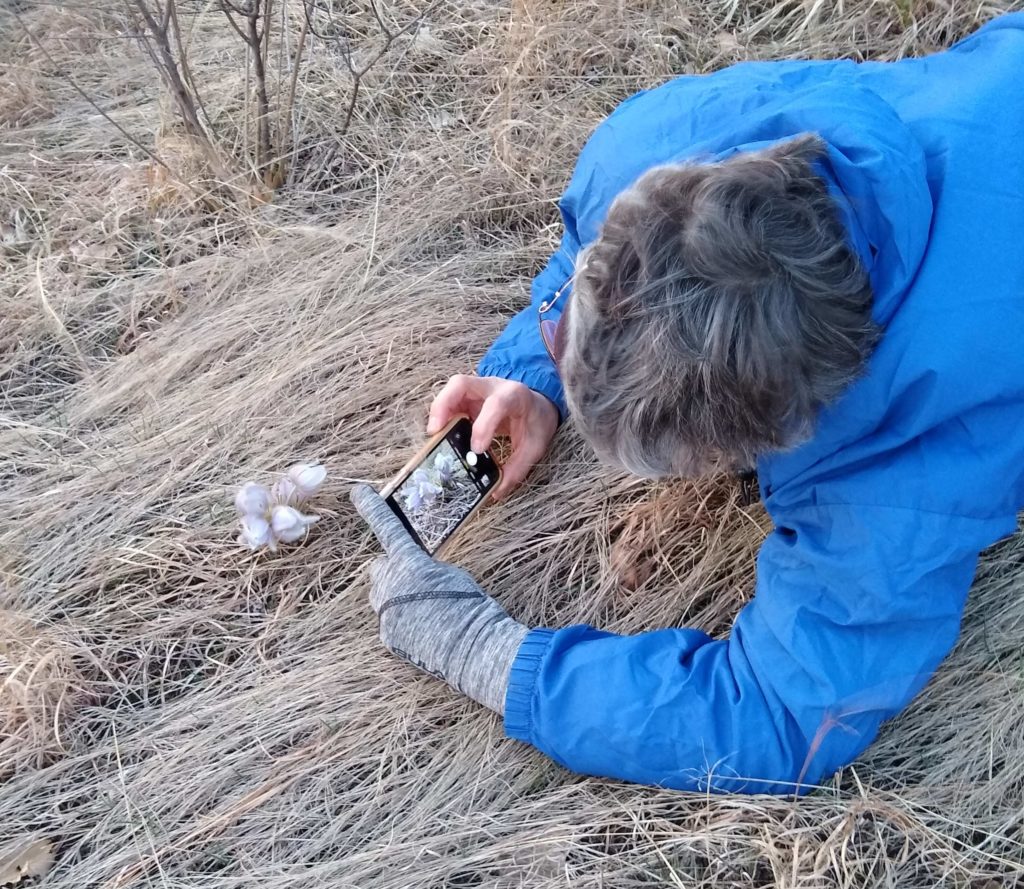I wanted to speak at length about
The happiness of my body and the
Delight of my mind for it was
April, a night, a full moon and –
But something in myself for maybe
From somewhere other said: not too
Many words, please, in the muddy shallows the
Frogs are singing.
— Mary Oliver, “April”
Imagine you are two inches tall and three inches long. You are nestled beneath layers of dirt and leaves in the woodlands and forests. Warmer temperatures are seeping through, sending a message to your soft, little body that it is time to awaken from your long winter slumber. Now is the time to dig out and head for the nearest pond or wetland. Your black mask and brown mottled skin provide the perfect camouflage to help you hop to your destination unseen by potential predators.
Your journey takes you through leaf litter, over sticks, under logs, around rocks until finally you reach the small pond at the bottom of the hill. You have arrived…You begin to sing!

It is here in these small, fishless, ephemeral ponds that breeding most often occurs for the Wood frog (Lithobates sylvaticus), the earliest amphibian to grace nature’s airways with their soft, duck-like cackling.
Wood frogs are a member of the True frog family which means they have long legs, narrow waists and smooth skin. Their fingers are not webbed but their toes are. Many frogs in this family also have two dorsolateral folds or large ridges that run down either side of the back.

A few fun facts about Wood frogs!
They are explosive breeders!
Wood frogs breed early using wet areas to lay their eggs that may dry up before summer arrives. After the eggs hatch, tadpoles have only 40-90 days to “grow up,” undergo metamorphosis, and become a fully grown frog.
What do they eat?
Tadpoles are strictly vegetarians, eating lots of algae and plant material. Adult frogs eat beetles, spiders, snails, worms, millipedes and more!
Frogs are a critical piece of the food web and become food for herons, raccoons, snakes, otters, crayfish and many other critters.
Pest control!
Frogs are important for pest control as they eat many of the insects that cause irritation to humans and other animals.
Bio-indicators!
Frogs can alert us to toxic conditions in waterways just like the canary in the coal mine. Their skin is permeable which allows pollutants or toxins to pass through and affect their health.
Special adaptations!
Frogs have excellent night vision and are very sensitive to movement. The placement of their eyes on the very top of their heads allows them to see to the front, sides and partially to the back.
If you want an experience that is completely delightful, get yourself to the nearest wetland or pond at sunset or later and get comfortable. Just like listening to any fine musical offering be it orchestra or band, the vibrations of the frog chorus will transport you to a place of joy and peace and the knowledge that in this moment, all is well and spring has, in fact, arrived.
Be Aware and Careful!
The journey of frogs, toads and salamanders is a hazardous one. Crossing roads is particularly dangerous as they make their way from woods to water and back again.
As you travel about in the evening over the coming weeks, especially on wet nights please be watchful on the road for our little amphibian friends.
More fun facts about frogs!
https://www.dnr.state.mn.us/reptiles_amphibians/frogs_toads/index.html
https://www.eekwi.org/know-your-frogs
https://infinitespider.com/learning-frog-call-resources
https://www.wisconsinwetlands.org/updates/identifying-frogs-by-their-calls

Attend an upcoming event with Lynette as your guide! Visit our events page for more information.